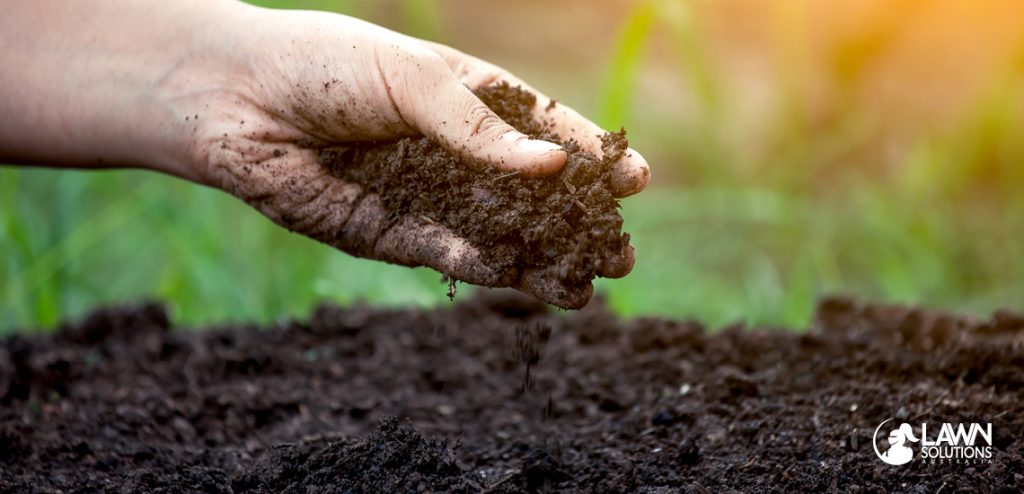From choosing your turf to installing your new lawn, there are few rules to follow to ensure it will thrive. In this blog, we look at what you should be doing to give your new lawn the best start, and what should be avoided.
Soil preparation before laying your new turf
The success of your new lawn will be heavily dependent on the soil preparation work that is undertaken before your new lawn is installed. If your soil is prepared correctly, your new turf will be able to grow its roots down into the soil base allowing it to flourish. If the soil preparation is not done correctly, problems including poor drainage, compaction, and pH imbalances can occur.

Do’s
- Do a soil pH test to see what your existing soils pH is. An ideal ph is between 5.5 – 7. If your soil is either side, you may need to adjust your soils pH. Check out our blog here for more information on how to adjust your soils pH.
- Kill off any existing vegetation using glyphosate or a similar non-selective herbicide. You may need 2 applications to ensure all existing vegetation is completely eradicated.
- Hoe in and turn over the existing base and remove any excess vegetation that has been sprayed out.
- Bring in a turf underlay mix. For most turf varieties 100 mm of a sandy loam or a turf underlay mix is recommended. Spread out the soil evenly to the area and correct levels with a soil leveller or rake.

Don’ts
- Don’t leave any weeds or other grasses in the soil. Even when soil is laid on top of them there is a high likelihood that they will be able to grow through the soil and into your new lawn.
Installing your turf
Now onto the fun part, installing your new lawn! On the day of installing your new lawn, make sure all your preparation work has been done beforehand. This will allow you to install your grass when it arrives.

Do’s
- Install your turf as soon as you receive it. Turf is a living plant, so it is best to get it back to its growing environment as soon as possible.
- Start laying the turf on a straight edge at the furthest point to your access and lay back towards the exit, so you are not working over fresh turf.
- Lay the turf in a brickwork pattern, butting the edges together. If you are working on a slope, lay the turf across the slope.
- If installing your turf on a hot day, water each section as you install it to avoid the turf drying out.

Don’ts
- Don’t leave your turf on the pallet sitting around for days in the hot heat.
- On a hot day, you may be tempted to water your turf while it is on the pallet, but it is best to avoid doing this. If water is applied while it is on the pallet, it will cool the turf on the outside, however the turf in the middle of the pallet will heat up at an accelerated rate and can cause burning.
- Allow foot traffic and pets onto the area. After the lawn has been installed it is best to keep as much traffic off the lawn until it establishes into the ground. If the turf receives high traffic, it will take longer to establish and may cause damage to the new lawn.
Caring for your new lawn
Your new lawn has now been installed! So, what’s next? For the first few weeks your lawn will need more frequent watering’s while the roots of the grass are establishing down into the soil base. After the lawns roots have grown down into the soil base you can reduce your watering’s to the lawn. After it has been installed, you will also need to look at mowing and fertilising.

Do’s
- For the first few days after your lawn has been down, ensure you are watering your lawn enough so that the roots of the grass are not drying out. For the first few days you will need to irrigate frequently. After the roots have grown into the soil base you can start reducing the number of times you need to irrigate.
- Your new lawn should be ready for its first mow once the roots of the grass have grown into the soil base. You can test if your lawn is ready for its first mow by trying to lift a corner of a turf roll from the ground. If the turf doesn’t lift from the ground, it is ready for a mow.
- Raise your mower height on the first mow so only the top of the leaf is removed.
- Once the lawn has been down for 6-8 weeks it will be ready for its first fertiliser application. For fertilising your new lawn we recommend using our Lawn Solutions Premium Fertiliser.
Don’ts
- While your new lawn is establishing it is best to hold off from using herbicides until it has fully established. If you do have weeds, it is best to pull them out by hand.
- Keep all foot traffic to a minimum while the lawn is establishing. Best to keep all pets and kids off the area.
Turf Installation & Initial Care – Best Practice Guidelines
For more lawn care tips and advice, check out our other lawn care blogs here.